Image of 1952 Chevrolet Bel Air, Note: These illustrations use artistic license and may differ from actual historical models.
Performance Metrics
Fundamental Metrics
Emotional Appeal
MMP Rating
| Engine Specifications | |
|---|---|
| Engine: | Inline 6 |
| Displacement: | 216.5 cu in (3.5 L) |
| Horsepower: | 92 hp |
| Torque: | 176 lb-ft |
| Compression Ratio: | 6.6:1 |
| Ignition System: | Battery and coil |
| Cooling System: | Water-cooled |
| Performance Specifications | |
| 0-60 Time: | Estimated 20 seconds |
| 1/4 Mile Time: | Estimated 21 seconds |
| Top Speed: | 76 mph |
| Transmission and Drive | |
| Drive Type: | Rear-wheel drive |
| Transmission Type: | 3-speed manual |
| Fuel and Efficiency | |
| Fuel System Type: | Carburetor |
| MPG: | Estimated 15-20 mpg |
| Dimensions and Brakes | |
| Brakes: | Drum brakes |
| Wheelbase: | 115 inches |
| Weight: | 3,235 lbs |
Note: Specifications for classic cars are given to the best of our ability, considering the limited and variant data available.
1952 Chevrolet Bel Air: A Touchstone of Postwar Automotive Elegance
The 1952 Chevrolet Bel Air emerged as a shining example of American automotive innovation, capturing the spirit of a nation in transition. Born from the assembly lines of General Motors, this vehicle not only reflected the postwar boom but also helped shape the era's suburban landscape. The Bel Air stood out with its distinctive hardtop design, which was a novelty at the time, offering the sleekness of a convertible with the practicality of a coupe. A notable moment in its history was when it became an emblem of Chevrolet's 50th anniversary, a celebration that underscored its importance to the brand and to American culture.
Design and Innovation
The 1952 Bel Air boasted an exterior that was both stately and forward-looking. Its chrome grille, sweeping fenders, and jet-inspired hood ornament spoke of an age infatuated with progress and speed. Inside, passengers were treated to an interior that prioritized comfort and style, with plush seats and high-quality fabrics. Technologically, it featured advancements such as full-pressure engine lubrication and automatic transmission options. While color options ranged from understated tones to vibrant hues, popular choices included Twilight Blue and Romany Red. The two-door hardtop body style became iconic, representing the peak of Bel Air's elegance.
Historical Significance
The 1952 Bel Air was pivotal in cementing Chevrolet's reputation for producing stylish yet affordable vehicles. It set itself apart with its Powerglide automatic transmission—a rarity among cars in its class—and its role in popularizing the hardtop body style influenced countless models that followed. The Bel Air's legacy is evident in how it helped bridge the gap between luxury and mainstream automobiles.
Performance and Handling
Underneath its polished hood lay a reliable inline-six or an optional V8 engine that delivered modest performance figures by today's standards but were respectable for its time. The top speed hovered around 90 mph, with acceleration from 0-60 mph taking around 12 seconds. On the road, the Bel Air handled with poise; its suspension absorbed imperfections while maintaining composure through turns. Driving one was an auditory delight—the hum of the engine was music to any gearhead's ears.
Ownership Experience
The 1952 Bel Air found its place as a versatile vehicle suitable for daily commutes, weekend shows, or even casual racing among enthusiasts. Its mechanical simplicity meant maintenance was straightforward for those with basic automotive knowledge. However, like many vehicles of its era, rust could be an adversary for preservationists.
Fun Facts
This classic car has seen its share of limelight with appearances in films and television shows set in the nostalgic '50s era. While not known for breaking speed records, it broke sales records for Chevrolet at the time. Some criticisms included a lackluster power output compared to modern standards and less efficient fuel consumption.
Collector's Information
Today, a well-preserved 1952 Chevrolet Bel Air can fetch anywhere from $20,000 to $60,000 depending on condition and originality—sometimes even more for exceptionally pristine examples. Production numbers were substantial for the time; however, surviving models in good condition are increasingly rare. As interest in mid-century Americana remains strong among collectors, values have generally appreciated over time.
Conclusion
The 1952 Chevrolet Bel Air stands as a testament to a bygone era of automotive design—a period piece that continues to captivate enthusiasts and collectors alike. It embodies an optimistic period in American history when cars were more than just transportation; they were statements of identity and ambition. As we look back on this gleaming artifact of postwar America, we're reminded that some classics never go out of style.
1952 Chevrolet Bel Air Catalog of Parts
 1952 Chevrolet Bel Air Slip-over Accelerator Pedal Pad Face-AP 30Slip-over Accelerator Pedal Pad Face. Attach to old steel back. 1-7/8" X 8-7/8". Each
1952 Chevrolet Bel Air Slip-over Accelerator Pedal Pad Face-AP 30Slip-over Accelerator Pedal Pad Face. Attach to old steel back. 1-7/8" X 8-7/8". Each 1952 Chevrolet Bel Air Bumper to Body Seal. 1-3/8" wide X 7' long. Each-BG 109-BBumper to Body Seal. 1-3/8" wide X 7' long. Each
1952 Chevrolet Bel Air Bumper to Body Seal. 1-3/8" wide X 7' long. Each-BG 109-BBumper to Body Seal. 1-3/8" wide X 7' long. Each 1952 Chevrolet Bel Air Rear Bumper Arm Insulator Grommets-BG 98Rear Bumper Arm Insulator Grommets. 1-9/16" wide X 2-3/4" long, with 1-11/16" long inner slot. Pair R&L
1952 Chevrolet Bel Air Rear Bumper Arm Insulator Grommets-BG 98Rear Bumper Arm Insulator Grommets. 1-9/16" wide X 2-3/4" long, with 1-11/16" long inner slot. Pair R&L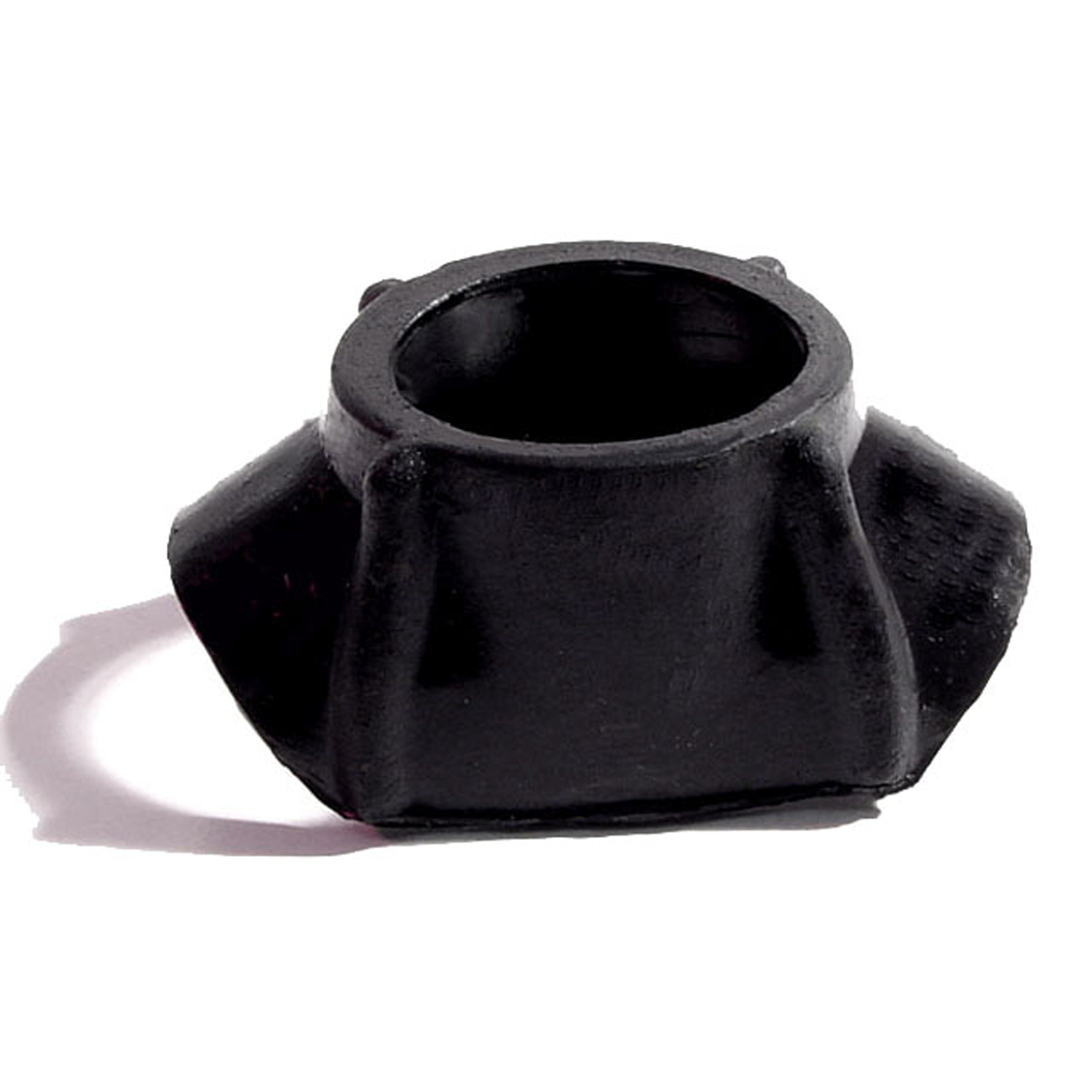 1952 Chevrolet Bel Air Steering Connection Grease Seal-BL 20Steering Connection Grease Seal. Made of grease and oil resistant neoprene. 2 used per car. Each
1952 Chevrolet Bel Air Steering Connection Grease Seal-BL 20Steering Connection Grease Seal. Made of grease and oil resistant neoprene. 2 used per car. Each 1952 Chevrolet Bel Air Shock Absorber Grommet. 1" bottom O.D., 3/4" high-BN 1Shock Absorber Grommet. 1" bottom O.D., 3/4" high., with 7/16" I.D. Each
1952 Chevrolet Bel Air Shock Absorber Grommet. 1" bottom O.D., 3/4" high-BN 1Shock Absorber Grommet. 1" bottom O.D., 3/4" high., with 7/16" I.D. Each 1952 Chevrolet Bel Air Front Stabilizer Bushings. Made of the best rubber-BN 105Front Stabilizer Bushings. Made of the best rubber. 1-1/2" high X 1-7/16" long. Pair
1952 Chevrolet Bel Air Front Stabilizer Bushings. Made of the best rubber-BN 105Front Stabilizer Bushings. Made of the best rubber. 1-1/2" high X 1-7/16" long. Pair 1952 Chevrolet Bel Air Shock Absorber Grommet. 1" bottom O.D-BN 11Shock Absorber Grommet. 1" bottom O.D., 3/4" high, with 5/8" I.D. Each
1952 Chevrolet Bel Air Shock Absorber Grommet. 1" bottom O.D-BN 11Shock Absorber Grommet. 1" bottom O.D., 3/4" high, with 5/8" I.D. Each 1952 Chevrolet Bel Air Front coil-spring insulator-BN 110Front coil-spring insulator. Fits '41-'60 Oldsmobile and '50-'83 GM passenger models. 5-3/8 in. OD x 3-3/4 in. ID x 3/4 in. high with 13/16 in. wide bottom flange 1/4" thick, 12 flutes. Each.
1952 Chevrolet Bel Air Front coil-spring insulator-BN 110Front coil-spring insulator. Fits '41-'60 Oldsmobile and '50-'83 GM passenger models. 5-3/8 in. OD x 3-3/4 in. ID x 3/4 in. high with 13/16 in. wide bottom flange 1/4" thick, 12 flutes. Each. 1952 Chevrolet Bel Air Shock Absorber Grommet. 1" bottom O.D., 5/8" high-BN 13Shock Absorber Grommet. 1" bottom O.D., 5/8" high., with 3/8" I.D. Each
1952 Chevrolet Bel Air Shock Absorber Grommet. 1" bottom O.D., 5/8" high-BN 13Shock Absorber Grommet. 1" bottom O.D., 5/8" high., with 3/8" I.D. Each 1952 Chevrolet Bel Air Upper Control Arm Bushing-BN 23Upper Control Arm Bushing. Pivot pin, caster and chamber front end adjustment. Eight used per car. 7/8" O.D., 3/4" I.D., 1/2" high. Each
1952 Chevrolet Bel Air Upper Control Arm Bushing-BN 23Upper Control Arm Bushing. Pivot pin, caster and chamber front end adjustment. Eight used per car. 7/8" O.D., 3/4" I.D., 1/2" high. Each 1952 Chevrolet Bel Air Lower Control Arm Seal Bushing. Four used per car-BN 24Lower Control Arm Seal Bushing. Four used per car. 1-1/4" O.D., 3/4" I.D. Each
1952 Chevrolet Bel Air Lower Control Arm Seal Bushing. Four used per car-BN 24Lower Control Arm Seal Bushing. Four used per car. 1-1/4" O.D., 3/4" I.D. Each 1952 Chevrolet Bel Air Front Stabilizer End Repair Kit-BNK 23Front Stabilizer End Repair Kit. 22-piece set for two stabilizer bars. Contains all rubber bushings, washers, bolts and nuts, enough for one front end. Set
1952 Chevrolet Bel Air Front Stabilizer End Repair Kit-BNK 23Front Stabilizer End Repair Kit. 22-piece set for two stabilizer bars. Contains all rubber bushings, washers, bolts and nuts, enough for one front end. Set 1952 Chevrolet Bel Air Clutch and Brake Pedal Pads. Good Reproduction-CB 102Clutch and Brake Pedal Pads. Good Reproduction. 3-3/4" wide X 2-5/8" long. Pair
1952 Chevrolet Bel Air Clutch and Brake Pedal Pads. Good Reproduction-CB 102Clutch and Brake Pedal Pads. Good Reproduction. 3-3/4" wide X 2-5/8" long. Pair 1952 Chevrolet Bel Air Cowl and Hood Seal. All rubber. 5' Piece. Each-CS 2Cowl and Hood Seal. All rubber. 5' Piece. Each
1952 Chevrolet Bel Air Cowl and Hood Seal. All rubber. 5' Piece. Each-CS 2Cowl and Hood Seal. All rubber. 5' Piece. Each 1952 Chevrolet Bel Air Door and Trunk Bumper. 1/2" O.D. X 1/2" high. Each-DB 35Door and Trunk Bumper. 1/2" O.D. X 1/2" high. Each
1952 Chevrolet Bel Air Door and Trunk Bumper. 1/2" O.D. X 1/2" high. Each-DB 35Door and Trunk Bumper. 1/2" O.D. X 1/2" high. Each 1952 Chevrolet Bel Air Upper Door Hinge Post Bumper. Held by screw-DB 60-AUpper Door Hinge Post Bumper. Held by screw. 7/8" diameter X 1/8" thick. Each
1952 Chevrolet Bel Air Upper Door Hinge Post Bumper. Held by screw-DB 60-AUpper Door Hinge Post Bumper. Held by screw. 7/8" diameter X 1/8" thick. Each 1952 Chevrolet Bel Air Center Division Bar Seal and Retainer-DP 16Center Division Bar Seal and Retainer. Made to original specifications to accommodate chrome molding. 17-1/2" long. Each
1952 Chevrolet Bel Air Center Division Bar Seal and Retainer-DP 16Center Division Bar Seal and Retainer. Made to original specifications to accommodate chrome molding. 17-1/2" long. Each 1952 Chevrolet Bel Air Door, Hood and Trunk Bumper Cap for adjustment bolt-HA 5Door, Hood and Trunk Bumper Cap for adjustment bolt. 7/8" diameter X 7/16" thick. Each
1952 Chevrolet Bel Air Door, Hood and Trunk Bumper Cap for adjustment bolt-HA 5Door, Hood and Trunk Bumper Cap for adjustment bolt. 7/8" diameter X 7/16" thick. Each 1952 Chevrolet Bel Air Door and Hood Bumper. 1" diameter X 7/8" thick. Each-HF 16Door and Hood Bumper. 1" diameter X 7/8" thick. Each
1952 Chevrolet Bel Air Door and Hood Bumper. 1" diameter X 7/8" thick. Each-HF 16Door and Hood Bumper. 1" diameter X 7/8" thick. Each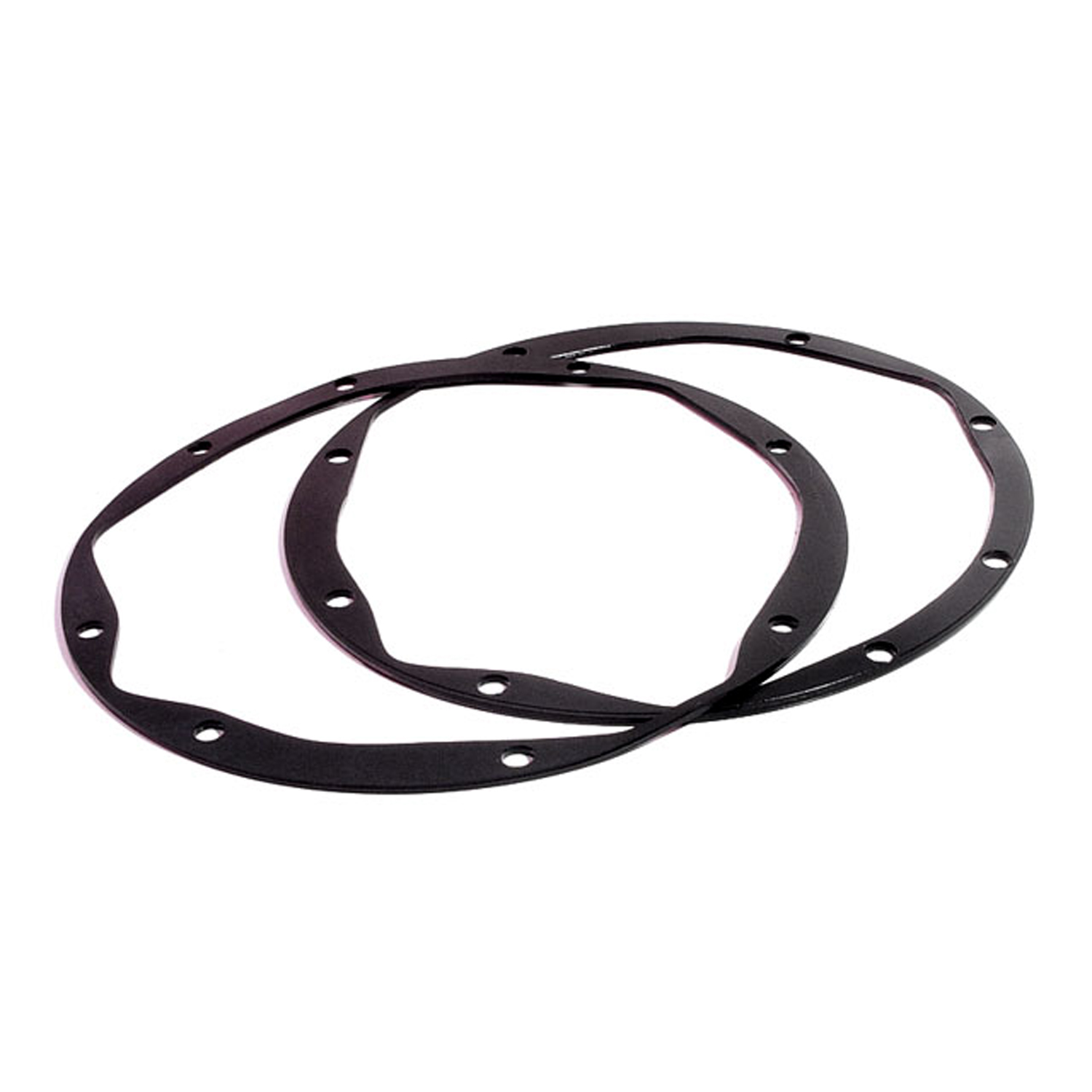 1952 Chevrolet Bel Air Headlight Assembly Housing Pad. 8-3/8" O.D. Pair-HR 7Headlight Assembly Housing Pad. 8-3/8" O.D. Pair
1952 Chevrolet Bel Air Headlight Assembly Housing Pad. 8-3/8" O.D. Pair-HR 7Headlight Assembly Housing Pad. 8-3/8" O.D. Pair 1952 Chevrolet Bel Air Trip Meter Reset Knob. Made of black rubber-KN 10Trip Meter Reset Knob. Made of black rubber. Compare to measurements: 1/8" I.D., 7/16" O.D. X 1/2" tall. Each
1952 Chevrolet Bel Air Trip Meter Reset Knob. Made of black rubber-KN 10Trip Meter Reset Knob. Made of black rubber. Compare to measurements: 1/8" I.D., 7/16" O.D. X 1/2" tall. Each 1952 Chevrolet Bel Air Rear Bumper Gravel Shield Seal. 1-3/8" wide-LP 109-B/FTRear Bumper Gravel Shield Seal. 1-3/8" wide. Sold by the foot
1952 Chevrolet Bel Air Rear Bumper Gravel Shield Seal. 1-3/8" wide-LP 109-B/FTRear Bumper Gravel Shield Seal. 1-3/8" wide. Sold by the foot 1952 Chevrolet Bel Air Fender Skirt Seal. Sold by the foot-LP 111-CFender Skirt Seal. Sold by the foot
1952 Chevrolet Bel Air Fender Skirt Seal. Sold by the foot-LP 111-CFender Skirt Seal. Sold by the foot 1952 Chevrolet Bel Air Fender Skirt Seal. Sold by the foot-LP 111-JFender Skirt Seal. Sold by the foot
1952 Chevrolet Bel Air Fender Skirt Seal. Sold by the foot-LP 111-JFender Skirt Seal. Sold by the foot 1952 Chevrolet Bel Air Door side seal. Same as LP 40-A, but for a heavier seal-LP 40Door side seal. Same as LP 40-A, but for a heavier seal. Fits many domestic passenger cars and trucks. Used in Cobra kit cars as trunk weatherstrip. Per foot.
1952 Chevrolet Bel Air Door side seal. Same as LP 40-A, but for a heavier seal-LP 40Door side seal. Same as LP 40-A, but for a heavier seal. Fits many domestic passenger cars and trucks. Used in Cobra kit cars as trunk weatherstrip. Per foot. 1952 Chevrolet Bel Air Door side seal. Same as LP 40, but for a lighter seal-LP 40-ADoor side seal. Same as LP 40, but for a lighter seal. Fits many domestic passenger cars and trucks. Universal seal for street rods and customs. Used in Cobra kit cars as door weatherstrip. Per foot.
1952 Chevrolet Bel Air Door side seal. Same as LP 40, but for a lighter seal-LP 40-ADoor side seal. Same as LP 40, but for a lighter seal. Fits many domestic passenger cars and trucks. Universal seal for street rods and customs. Used in Cobra kit cars as door weatherstrip. Per foot. 1952 Chevrolet Bel Air Front Lower Cushion. Two used per car-MM 6Front Lower Cushion. Two used per car. 1" high, 2-1/4" long, 1-11/16" wide. Replaces OEM #3700332. Each
1952 Chevrolet Bel Air Front Lower Cushion. Two used per car-MM 6Front Lower Cushion. Two used per car. 1" high, 2-1/4" long, 1-11/16" wide. Replaces OEM #3700332. Each 1952 Chevrolet Bel Air Door Handle Pads. 1-7/8" long and 1-3/8" long. Pair R&L-MP 484-DDoor Handle Pads. 1-7/8" long and 1-3/8" long. Pair R&L
1952 Chevrolet Bel Air Door Handle Pads. 1-7/8" long and 1-3/8" long. Pair R&L-MP 484-DDoor Handle Pads. 1-7/8" long and 1-3/8" long. Pair R&L 1952 Chevrolet Bel Air Antenna Pad. 1-7/8" O.D. Each-MP 484-EAntenna Pad. 1-7/8" O.D. Each
1952 Chevrolet Bel Air Antenna Pad. 1-7/8" O.D. Each-MP 484-EAntenna Pad. 1-7/8" O.D. Each 1952 Chevrolet Bel Air Tail-light Pads. 3-7/8" wide X 6-5/8" long. Pair-MP 536Tail-light Pads. 3-7/8" wide X 6-5/8" long. Pair
1952 Chevrolet Bel Air Tail-light Pads. 3-7/8" wide X 6-5/8" long. Pair-MP 536Tail-light Pads. 3-7/8" wide X 6-5/8" long. Pair 1952 Chevrolet Bel Air Windshield Wiper Transmission Pad-MP 536-AWindshield Wiper Transmission Pad. 1-1/4" wide X 1-1/2" long. Each
1952 Chevrolet Bel Air Windshield Wiper Transmission Pad-MP 536-AWindshield Wiper Transmission Pad. 1-1/4" wide X 1-1/2" long. Each 1952 Chevrolet Bel Air Park Light Pads. 2-3/8" wide X 16" long. Pair-MP 536-BPark Light Pads. 2-3/8" wide X 16" long. Pair
1952 Chevrolet Bel Air Park Light Pads. 2-3/8" wide X 16" long. Pair-MP 536-BPark Light Pads. 2-3/8" wide X 16" long. Pair 1952 Chevrolet Bel Air Brake Cover Inspection Hole Seal. 3-3/8" O.D. Each-RP 2-ABrake Cover Inspection Hole Seal. 3-3/8" O.D. Each
1952 Chevrolet Bel Air Brake Cover Inspection Hole Seal. 3-3/8" O.D. Each-RP 2-ABrake Cover Inspection Hole Seal. 3-3/8" O.D. Each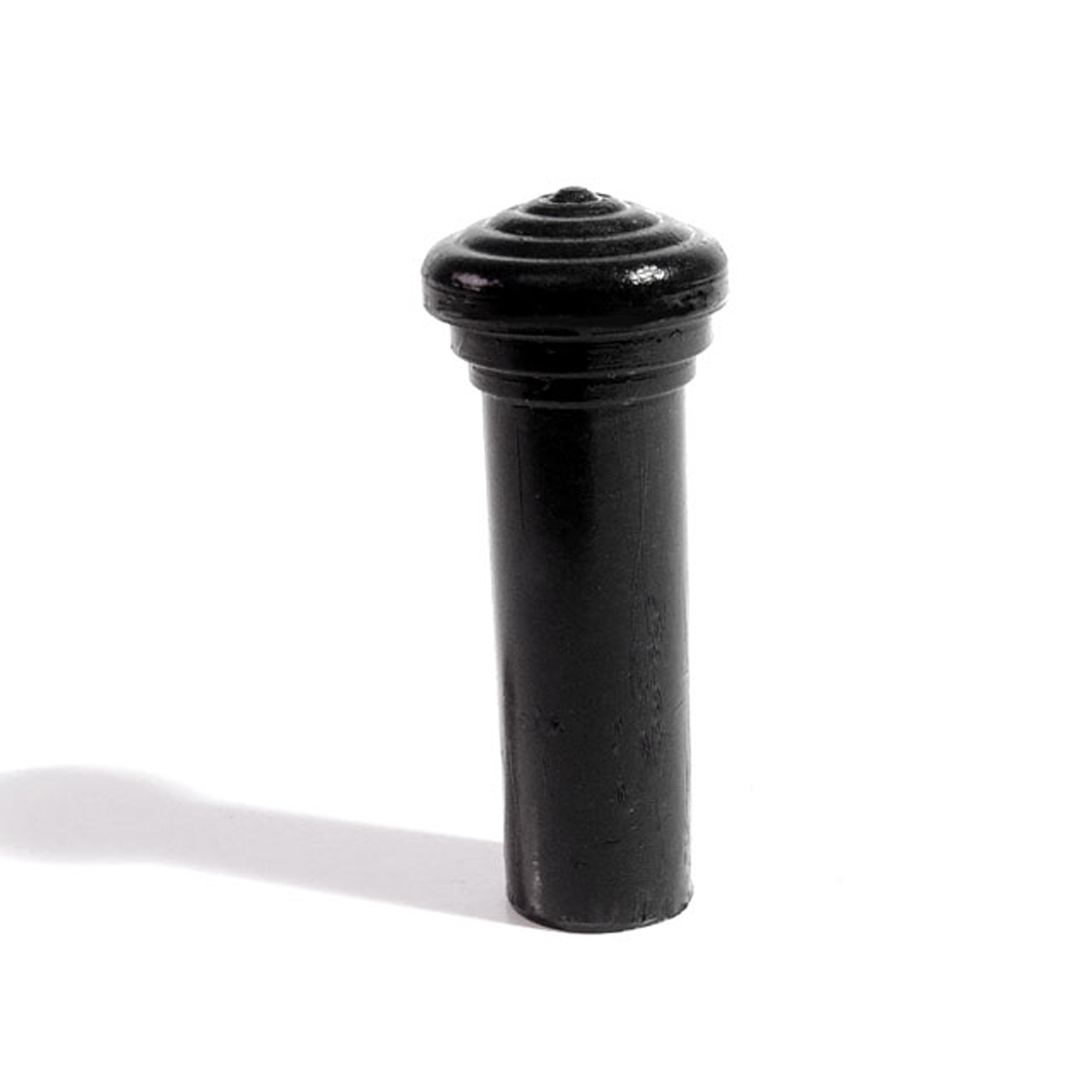 1952 Chevrolet Bel Air Door Lock Knob. Made of Black rubber, self-threading-RP 304-ADoor Lock Knob. Made of Black rubber, self-threading. 1-3/8" tall with 1/8" lower I.D., 3/8" lower O.D. Each
1952 Chevrolet Bel Air Door Lock Knob. Made of Black rubber, self-threading-RP 304-ADoor Lock Knob. Made of Black rubber, self-threading. 1-3/8" tall with 1/8" lower I.D., 3/8" lower O.D. Each 1952 Chevrolet Bel Air Door Lock Knob. Made of Slate Blue rubber, self-threading-RP 304-CDoor Lock Knob. Made of Slate Blue rubber, self-threading. 1-3/8" tall with 1/8" lower I.D., 3/8" lower O.D. Each
1952 Chevrolet Bel Air Door Lock Knob. Made of Slate Blue rubber, self-threading-RP 304-CDoor Lock Knob. Made of Slate Blue rubber, self-threading. 1-3/8" tall with 1/8" lower I.D., 3/8" lower O.D. Each 1952 Chevrolet Bel Air Door Lock Knob. Made of Navy Blue rubber, self-threading-RP 304-DDoor Lock Knob. Made of Navy Blue rubber, self-threading. 1-3/8" tall with 1/8" lower I.D., 3/8" lower O.D. Each
1952 Chevrolet Bel Air Door Lock Knob. Made of Navy Blue rubber, self-threading-RP 304-DDoor Lock Knob. Made of Navy Blue rubber, self-threading. 1-3/8" tall with 1/8" lower I.D., 3/8" lower O.D. Each 1952 Chevrolet Bel Air Door Lock Knob. Made of Silver Blue rubber, self-threading-RP 304-EDoor Lock Knob. Made of Silver Blue rubber, self-threading. 1-3/8" tall with 1/8" lower I.D., 3/8" lower O.D. Each
1952 Chevrolet Bel Air Door Lock Knob. Made of Silver Blue rubber, self-threading-RP 304-EDoor Lock Knob. Made of Silver Blue rubber, self-threading. 1-3/8" tall with 1/8" lower I.D., 3/8" lower O.D. Each 1952 Chevrolet Bel Air Door Lock Knob. Made of Fawn colored rubber, self-threading-RP 304-FDoor Lock Knob. Made of Fawn colored rubber, self-threading. 1-3/8" tall with 1/8" lower I.D., 3/8" lower O.D. Each
1952 Chevrolet Bel Air Door Lock Knob. Made of Fawn colored rubber, self-threading-RP 304-FDoor Lock Knob. Made of Fawn colored rubber, self-threading. 1-3/8" tall with 1/8" lower I.D., 3/8" lower O.D. Each 1952 Chevrolet Bel Air Door Lock Knob. Made of Olive Green rubber, self-threading-RP 304-GDoor Lock Knob. Made of Olive Green rubber, self-threading. 1-3/8" tall with 1/8" lower I.D., 3/8" lower O.D. Each
1952 Chevrolet Bel Air Door Lock Knob. Made of Olive Green rubber, self-threading-RP 304-GDoor Lock Knob. Made of Olive Green rubber, self-threading. 1-3/8" tall with 1/8" lower I.D., 3/8" lower O.D. Each 1952 Chevrolet Bel Air Door Lock Knob. Made of Yellow rubber, self-threading-RP 304-HDoor Lock Knob. Made of Yellow rubber, self-threading. 1-3/8" tall with 1/8" lower I.D., 3/8" lower O.D. Each
1952 Chevrolet Bel Air Door Lock Knob. Made of Yellow rubber, self-threading-RP 304-HDoor Lock Knob. Made of Yellow rubber, self-threading. 1-3/8" tall with 1/8" lower I.D., 3/8" lower O.D. Each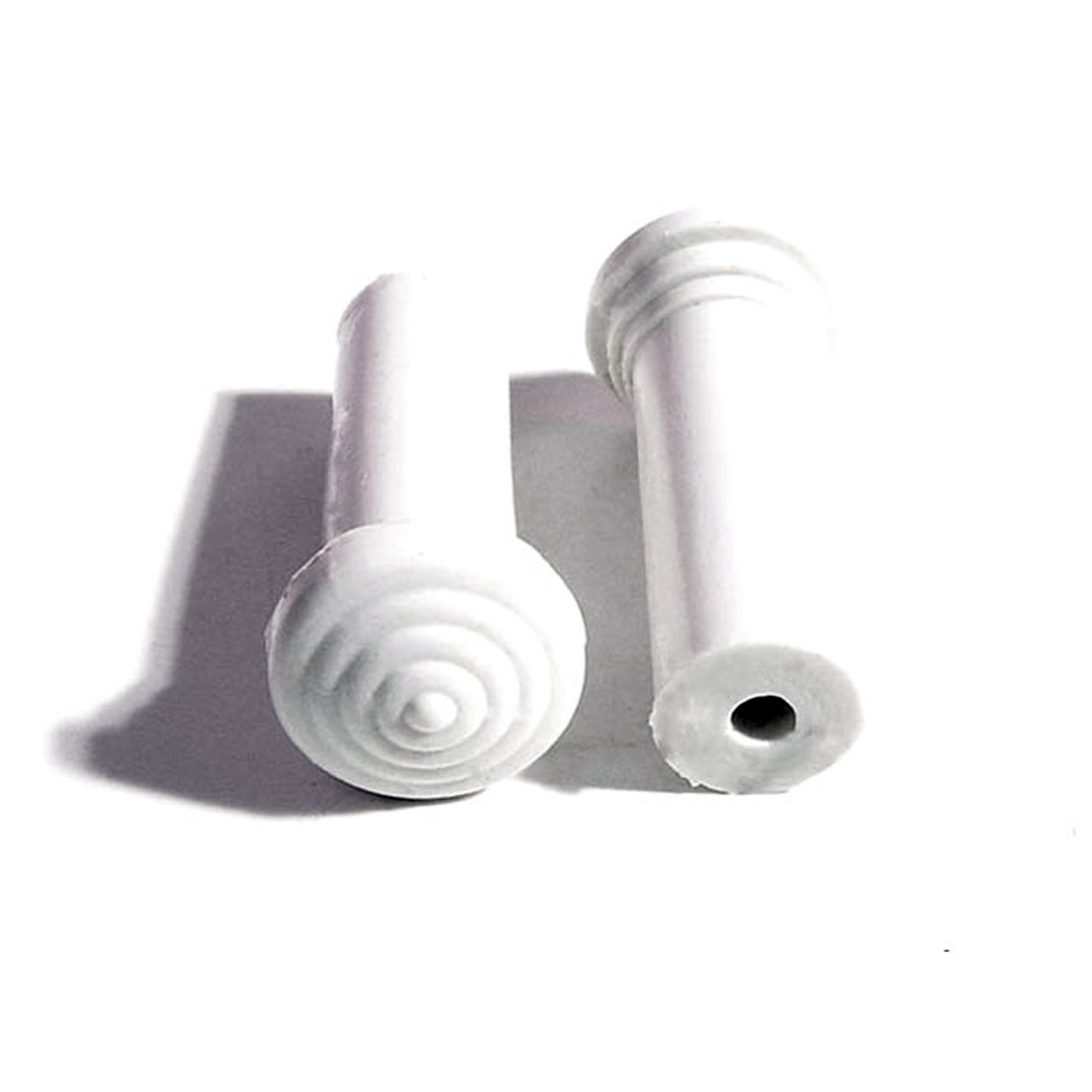 1952 Chevrolet Bel Air Door Lock Knob. Made of White rubber, self-threading-RP 304-IDoor Lock Knob. Made of White rubber, self-threading. 1-3/8" tall with 1/8" lower I.D., 3/8" lower O.D. Each
1952 Chevrolet Bel Air Door Lock Knob. Made of White rubber, self-threading-RP 304-IDoor Lock Knob. Made of White rubber, self-threading. 1-3/8" tall with 1/8" lower I.D., 3/8" lower O.D. Each 1952 Chevrolet Bel Air Door Lock Knob. Made of Silver rubber, self-threading-RP 304-JDoor Lock Knob. Made of Silver rubber, self-threading. 1-3/8" tall with 1/8" lower I.D., 3/8" lower O.D. Each
1952 Chevrolet Bel Air Door Lock Knob. Made of Silver rubber, self-threading-RP 304-JDoor Lock Knob. Made of Silver rubber, self-threading. 1-3/8" tall with 1/8" lower I.D., 3/8" lower O.D. Each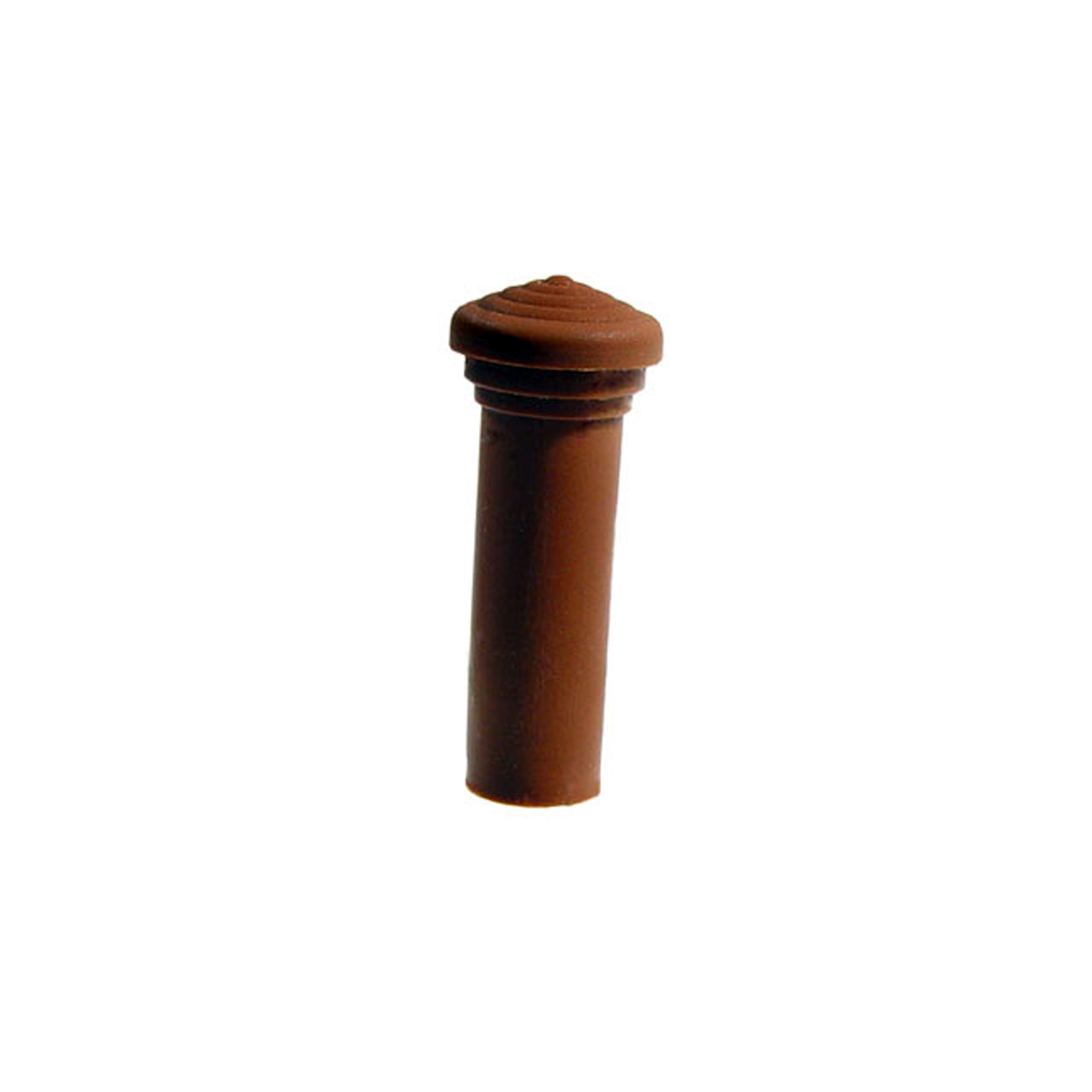 1952 Chevrolet Bel Air Door Lock Knob. Made of Medium Brown rubber, self-threading-RP 304-KDoor Lock Knob. Made of Medium Brown rubber, self-threading. 1-3/8" tall with 1/8" lower I.D., 3/8" lower O.D. Each
1952 Chevrolet Bel Air Door Lock Knob. Made of Medium Brown rubber, self-threading-RP 304-KDoor Lock Knob. Made of Medium Brown rubber, self-threading. 1-3/8" tall with 1/8" lower I.D., 3/8" lower O.D. Each 1952 Chevrolet Bel Air Door Lock Knob. Made of Wedgwood rubber, self-threading-RP 304-LDoor Lock Knob. Made of Wedgwood rubber, self-threading. 1-3/8" tall with 1/8" lower I.D., 3/8" lower O.D. Each
1952 Chevrolet Bel Air Door Lock Knob. Made of Wedgwood rubber, self-threading-RP 304-LDoor Lock Knob. Made of Wedgwood rubber, self-threading. 1-3/8" tall with 1/8" lower I.D., 3/8" lower O.D. Each 1952 Chevrolet Bel Air Door Lock Knob. Made of Teal Green rubber, self-threading-RP 304-MDoor Lock Knob. Made of Teal Green rubber, self-threading. 1-3/8" tall with 1/8" lower I.D., 3/8" lower O.D. Each
1952 Chevrolet Bel Air Door Lock Knob. Made of Teal Green rubber, self-threading-RP 304-MDoor Lock Knob. Made of Teal Green rubber, self-threading. 1-3/8" tall with 1/8" lower I.D., 3/8" lower O.D. Each 1952 Chevrolet Bel Air Door Lock Knob. Made of Moss Green rubber, self-threading-RP 304-NDoor Lock Knob. Made of Moss Green rubber, self-threading. 1-3/8" tall with 1/8" lower I.D., 3/8" lower O.D. Each
1952 Chevrolet Bel Air Door Lock Knob. Made of Moss Green rubber, self-threading-RP 304-NDoor Lock Knob. Made of Moss Green rubber, self-threading. 1-3/8" tall with 1/8" lower I.D., 3/8" lower O.D. Each 1952 Chevrolet Bel Air Door Lock Knob. Made of Ember glow rubber, self-threading-RP 304-ODoor Lock Knob. Made of Ember glow rubber, self-threading. 1-3/8" tall with 1/8" lower I.D., 3/8" lower O.D. Each
1952 Chevrolet Bel Air Door Lock Knob. Made of Ember glow rubber, self-threading-RP 304-ODoor Lock Knob. Made of Ember glow rubber, self-threading. 1-3/8" tall with 1/8" lower I.D., 3/8" lower O.D. Each 1952 Chevrolet Bel Air Clutch Bumpers. Replaces OEM #594989. Pair-RP 31-AClutch Bumpers. Replaces OEM #594989. Pair
1952 Chevrolet Bel Air Clutch Bumpers. Replaces OEM #594989. Pair-RP 31-AClutch Bumpers. Replaces OEM #594989. Pair 1952 Chevrolet Bel Air Hydro-Electric Power Unit Mounting Cushion-RP 700Hydro-Electric Power Unit Mounting Cushion. Two to three used per car. 1" O.D. X 3/4" high rubber with 1/4 x 20 x 3/4" Studs. Replaces OEM #4149788. Each
1952 Chevrolet Bel Air Hydro-Electric Power Unit Mounting Cushion-RP 700Hydro-Electric Power Unit Mounting Cushion. Two to three used per car. 1" O.D. X 3/4" high rubber with 1/4 x 20 x 3/4" Studs. Replaces OEM #4149788. Each 1952 Chevrolet Bel Air Anti-Rattle Pad. Used on rear bumper deflector-SB 108Anti-Rattle Pad. Used on rear bumper deflector. Does not fit station wagon or sedan delivery. 2-1/8" Long x 7/8" Wide. Each
1952 Chevrolet Bel Air Anti-Rattle Pad. Used on rear bumper deflector-SB 108Anti-Rattle Pad. Used on rear bumper deflector. Does not fit station wagon or sedan delivery. 2-1/8" Long x 7/8" Wide. Each 1952 Chevrolet Bel Air Fuel Door Bumper. Held by screw. 1/2" X 1/2" X 1/4"-SB 65Fuel Door Bumper. Held by screw. 1/2" X 1/2" X 1/4". Pair
1952 Chevrolet Bel Air Fuel Door Bumper. Held by screw. 1/2" X 1/2" X 1/4"-SB 65Fuel Door Bumper. Held by screw. 1/2" X 1/2" X 1/4". Pair 1952 Chevrolet Bel Air Side Window Bumper-SB 98Side Window Bumper. For side window glass in vent frame at top of window. Made with steel core like original. Replaces OEM #4180904-5. Pair R&L
1952 Chevrolet Bel Air Side Window Bumper-SB 98Side Window Bumper. For side window glass in vent frame at top of window. Made with steel core like original. Replaces OEM #4180904-5. Pair R&L 1952 Chevrolet Bel Air Steering/Shift Column Toe Pan Gasket-SC 23-ASteering/Shift Column Toe Pan Gasket. Die-cut from closed-cell sponge. Made with angled holes. 3-1/2" O.D., 4-7/8" High. Each
1952 Chevrolet Bel Air Steering/Shift Column Toe Pan Gasket-SC 23-ASteering/Shift Column Toe Pan Gasket. Die-cut from closed-cell sponge. Made with angled holes. 3-1/2" O.D., 4-7/8" High. Each 1952 Chevrolet Bel Air Vent Cable Firewall Brace Grommet-SM 105Vent Cable Firewall Brace Grommet. Fits 7/16" hole in sheet metal. 1/4" center hole. Each
1952 Chevrolet Bel Air Vent Cable Firewall Brace Grommet-SM 105Vent Cable Firewall Brace Grommet. Fits 7/16" hole in sheet metal. 1/4" center hole. Each 1952 Chevrolet Bel Air Wire Harness Grommet-SM 106Wire Harness Grommet. Fits through left end (radiator core) support. Fits 15/16" hole in sheet metal. 5/8" center hole. Each
1952 Chevrolet Bel Air Wire Harness Grommet-SM 106Wire Harness Grommet. Fits through left end (radiator core) support. Fits 15/16" hole in sheet metal. 5/8" center hole. Each 1952 Chevrolet Bel Air Speedometer Cable / Utility Grommet-SM 2Speedometer Cable / Utility Grommet. Fits 3/4" to 13/16" hole. 3/16" center hole. Each
1952 Chevrolet Bel Air Speedometer Cable / Utility Grommet-SM 2Speedometer Cable / Utility Grommet. Fits 3/4" to 13/16" hole. 3/16" center hole. Each 1952 Chevrolet Bel Air Wire Harness Grommet. Each-SM 3Wire Harness Grommet. Each
1952 Chevrolet Bel Air Wire Harness Grommet. Each-SM 3Wire Harness Grommet. Each 1952 Chevrolet Bel Air Special Purpose Grommet-SM 4Special Purpose Grommet. For firewall, fuel gauge wire, horn wire, hood latch cable and fresh air cable. Fits 1/2" hole. 1/8" center hole. Each
1952 Chevrolet Bel Air Special Purpose Grommet-SM 4Special Purpose Grommet. For firewall, fuel gauge wire, horn wire, hood latch cable and fresh air cable. Fits 1/2" hole. 1/8" center hole. Each 1952 Chevrolet Bel Air Hole Plug and Cowl Bumper. Fits 1/2" hole. Each-SM 52Hole Plug and Cowl Bumper. Fits 1/2" hole. Each
1952 Chevrolet Bel Air Hole Plug and Cowl Bumper. Fits 1/2" hole. Each-SM 52Hole Plug and Cowl Bumper. Fits 1/2" hole. Each 1952 Chevrolet Bel Air Firewall Grommet-SM 53Firewall Grommet. For tachometer, speedometer and emergency brake cable. Fits 7/8" hole. 1-3/16" O.D., 1/4" I.D. Each
1952 Chevrolet Bel Air Firewall Grommet-SM 53Firewall Grommet. For tachometer, speedometer and emergency brake cable. Fits 7/8" hole. 1-3/16" O.D., 1/4" I.D. Each 1952 Chevrolet Bel Air Firewall Grommet-SM 55Firewall Grommet. For throttle rod tube, oil pressure gauge pipe, heat indicator tube and choke rod. 1-3/8" O.D., 7/8" I.D. Each
1952 Chevrolet Bel Air Firewall Grommet-SM 55Firewall Grommet. For throttle rod tube, oil pressure gauge pipe, heat indicator tube and choke rod. 1-3/8" O.D., 7/8" I.D. Each 1952 Chevrolet Bel Air Headlight Wire Grommet-SM 57Headlight Wire Grommet. Used with square clip (not included). Fits 7/8" hole. 7/16" center hole. Each
1952 Chevrolet Bel Air Headlight Wire Grommet-SM 57Headlight Wire Grommet. Used with square clip (not included). Fits 7/8" hole. 7/16" center hole. Each 1952 Chevrolet Bel Air Windshield Wiper Pivot Grommet. 5/16" I.D., 5/8" O.D-SM 6Windshield Wiper Pivot Grommet. 5/16" I.D., 5/8" O.D. Fits 7/16" hole. Each
1952 Chevrolet Bel Air Windshield Wiper Pivot Grommet. 5/16" I.D., 5/8" O.D-SM 6Windshield Wiper Pivot Grommet. 5/16" I.D., 5/8" O.D. Fits 7/16" hole. Each 1952 Chevrolet Bel Air Master Cylinder Rod Dust Boot. Each-SM 65-EMaster Cylinder Rod Dust Boot. Each
1952 Chevrolet Bel Air Master Cylinder Rod Dust Boot. Each-SM 65-EMaster Cylinder Rod Dust Boot. Each 1952 Chevrolet Bel Air Pressure Ring Washer. 1-7/8" O.D., 3/4" I.D., 3/8" thick.-SM 69Pressure Ring Washer for Interior Door Handles & Window Regulators. Fits between escutcheon plates & door panel. Made of sponge rubber. 1-7/8" O.D., 3/4" I.D., 3/8" thick. Each (Corvette: Use for heater hose washer @ firewall)
1952 Chevrolet Bel Air Pressure Ring Washer. 1-7/8" O.D., 3/4" I.D., 3/8" thick.-SM 69Pressure Ring Washer for Interior Door Handles & Window Regulators. Fits between escutcheon plates & door panel. Made of sponge rubber. 1-7/8" O.D., 3/4" I.D., 3/8" thick. Each (Corvette: Use for heater hose washer @ firewall) 1952 Chevrolet Bel Air Firewall and Utility Grommet. Fits 3/4" hole. 3/16" I.D-SM 8Firewall and Utility Grommet. Fits 3/4" hole. 3/16" I.D. Each
1952 Chevrolet Bel Air Firewall and Utility Grommet. Fits 3/4" hole. 3/16" I.D-SM 8Firewall and Utility Grommet. Fits 3/4" hole. 3/16" I.D. Each 1952 Chevrolet Bel Air Starter Wire to Firewall Grommet. Possibly for other wires-SM 99Starter Wire to Firewall Grommet. Possibly for other wires. Fits a 13/16" hole. Each
1952 Chevrolet Bel Air Starter Wire to Firewall Grommet. Possibly for other wires-SM 99Starter Wire to Firewall Grommet. Possibly for other wires. Fits a 13/16" hole. Each 1952 Chevrolet Bel Air Trunk Seal. 16 Feet overall length. Each-TK 50/52-8Trunk Seal. 16 Feet overall length. Each
1952 Chevrolet Bel Air Trunk Seal. 16 Feet overall length. Each-TK 50/52-8Trunk Seal. 16 Feet overall length. Each 1952 Chevrolet Bel Air Trunk Seal. Each-TK 56-18Trunk Seal. Each
1952 Chevrolet Bel Air Trunk Seal. Each-TK 56-18Trunk Seal. Each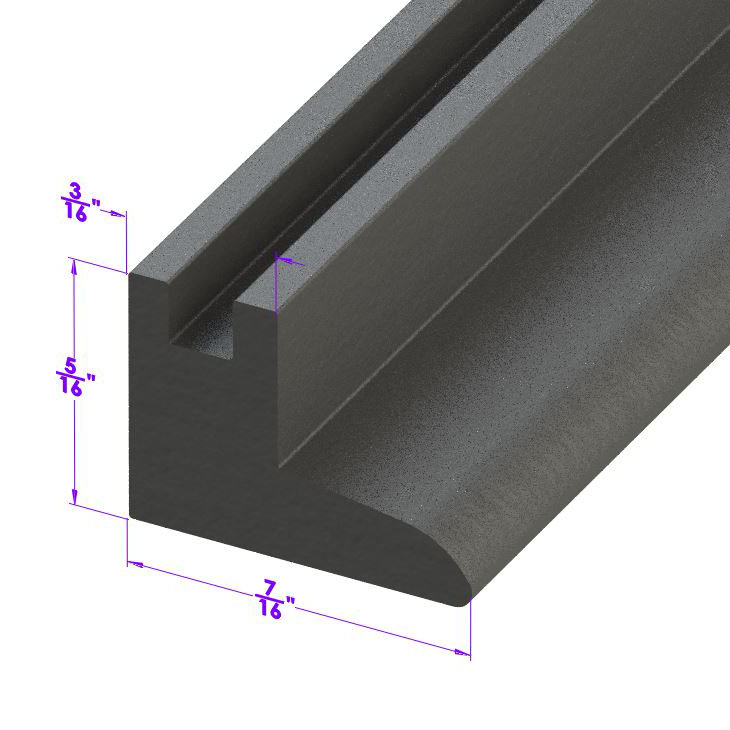 1952 Chevrolet Bel Air Vertical Seal for Vent Window. Each is 17" long. Pair-VS 2Vertical Seal for Vent Window. Each is 17" long. Pair
1952 Chevrolet Bel Air Vertical Seal for Vent Window. Each is 17" long. Pair-VS 2Vertical Seal for Vent Window. Each is 17" long. Pair 1952 Chevrolet Bel Air Flexible glass-run channel-WC 11-72Flexible glass-run channel. Mohair lined, cloth covered with stainless steel bead. Used on side windows. 72 in. long. Each. NOTE: $20 special shipping charge applies for domestic orders. Call or email for overseas shipping costs. Part can be sectioned in two equal lengths to reduce overseas shipping costs.
1952 Chevrolet Bel Air Flexible glass-run channel-WC 11-72Flexible glass-run channel. Mohair lined, cloth covered with stainless steel bead. Used on side windows. 72 in. long. Each. NOTE: $20 special shipping charge applies for domestic orders. Call or email for overseas shipping costs. Part can be sectioned in two equal lengths to reduce overseas shipping costs. 1952 Chevrolet Bel Air Rigid division-bar channel. Made with Zinc-plated bead-WC 1-72Rigid division-bar channel. Made with Zinc-plated bead. Used on lower side windows. 72 in. long. Each. NOTE: $20 special shipping charge applies for domestic orders. Call or email for overseas shipping costs. Part can be sectioned into two equal lengths to reduce overseas shipping costs.
1952 Chevrolet Bel Air Rigid division-bar channel. Made with Zinc-plated bead-WC 1-72Rigid division-bar channel. Made with Zinc-plated bead. Used on lower side windows. 72 in. long. Each. NOTE: $20 special shipping charge applies for domestic orders. Call or email for overseas shipping costs. Part can be sectioned into two equal lengths to reduce overseas shipping costs. 1952 Chevrolet Bel Air Rigid division-bar channel. Made with Zinc-plated bead-WC 1-96Rigid division-bar channel. Made with Zinc-plated bead. Used on lower side windows. 96 in. long. Each. NOTE: $20 special shipping charge applies for domestic orders. Call or email for overseas shipping costs. Part can be sectioned in two or three equal lengths to reduce overseas shipping costs.
1952 Chevrolet Bel Air Rigid division-bar channel. Made with Zinc-plated bead-WC 1-96Rigid division-bar channel. Made with Zinc-plated bead. Used on lower side windows. 96 in. long. Each. NOTE: $20 special shipping charge applies for domestic orders. Call or email for overseas shipping costs. Part can be sectioned in two or three equal lengths to reduce overseas shipping costs. 1952 Chevrolet Bel Air Rigid division-bar channel. Made with stainless steel bead-WC 2-72Rigid division-bar channel. Made with stainless steel bead. 72 in. long. Each. NOTE: $20 special shipping charge applies for domestic orders. Call or email for overseas shipping costs. Part can be sectioned into two equal lengths to reduce overseas shipping costs.
1952 Chevrolet Bel Air Rigid division-bar channel. Made with stainless steel bead-WC 2-72Rigid division-bar channel. Made with stainless steel bead. 72 in. long. Each. NOTE: $20 special shipping charge applies for domestic orders. Call or email for overseas shipping costs. Part can be sectioned into two equal lengths to reduce overseas shipping costs. 1952 Chevrolet Bel Air Flexible sweeper. Made with stainless steel bead-WC 8-72Flexible sweeper. Made with stainless steel bead. Used on inner and outer beltlines. Also forms easily for use with sliding quarter windows. 72 in. long. Each. NOTE: $20 special shipping charge applies for domestic orders. Call or email for overseas shipping costs. Part can be sectioned into two equal lengths to reduce overseas shipping costs.
1952 Chevrolet Bel Air Flexible sweeper. Made with stainless steel bead-WC 8-72Flexible sweeper. Made with stainless steel bead. Used on inner and outer beltlines. Also forms easily for use with sliding quarter windows. 72 in. long. Each. NOTE: $20 special shipping charge applies for domestic orders. Call or email for overseas shipping costs. Part can be sectioned into two equal lengths to reduce overseas shipping costs. 1952 Chevrolet Bel Air Fender Bolts. For use with Fender Bolt Washers; WF 3001-WF 3000Fender Bolts. For use with Fender Bolt Washers; WF 3001. Zinc Chromate plated, high strength. 1" X 5/16". Set of 25
1952 Chevrolet Bel Air Fender Bolts. For use with Fender Bolt Washers; WF 3001-WF 3000Fender Bolts. For use with Fender Bolt Washers; WF 3001. Zinc Chromate plated, high strength. 1" X 5/16". Set of 25 1952 Chevrolet Bel Air Fender Bolt Washers. For use with Fender Bolts; WF 3000-WF 3001Fender Bolt Washers. For use with Fender Bolts; WF 3000. High quality, cadmium plated. 1-1/4" O.D., 3/8" I.D. Set of 25
1952 Chevrolet Bel Air Fender Bolt Washers. For use with Fender Bolts; WF 3000-WF 3001Fender Bolt Washers. For use with Fender Bolts; WF 3000. High quality, cadmium plated. 1-1/4" O.D., 3/8" I.D. Set of 25 1952 Chevrolet Bel Air Front Vent Window Seals For Convertibles. Pair-WR 7301Front Vent Window Seals For Convertibles. Pair
1952 Chevrolet Bel Air Front Vent Window Seals For Convertibles. Pair-WR 7301Front Vent Window Seals For Convertibles. Pair 1952 Chevrolet Bel Air Front Suspension Bumper. 2" high. Each-XB 18Front Suspension Bumper. 2" high. Each
1952 Chevrolet Bel Air Front Suspension Bumper. 2" high. Each-XB 18Front Suspension Bumper. 2" high. Each 1952 Chevrolet Bel Air Rear Spring to Frame Bumper-XB 28Rear Spring to Frame Bumper. 3-7/8" long, 1-7/8" wide, 2-3/8" high. Each
1952 Chevrolet Bel Air Rear Spring to Frame Bumper-XB 28Rear Spring to Frame Bumper. 3-7/8" long, 1-7/8" wide, 2-3/8" high. EachWhy Choose Metro?
For over 100 years, Metro Moulded Parts has been the pinnacle of quality in classic car restoration parts. Our commitment to precision and authenticity in every component ensures a perfect fit and an OEM-level appearance.
- Expert Craftsmanship & Quality: Each part is a testament to our dedication to reliability and perfection, crafted from original designs and thoroughly tested.
- Advanced Technology: We use cutting-edge techniques to create flawless, long-lasting parts that surpass others in performance.
- SuperSoft Sponge – The Ultimate Door Seal: Not only are our door seals 30% softer than competitors', but they're also guaranteed to never leak. They effectively reduce wind and road noise, enhancing your classic car's comfort and driving experience.
- Proudly American: Our parts are a product of American craftsmanship, made in the USA with a spirit of excellence and heritage.
- Unrivaled Warranty: We back our products with a 30-year industry-leading warranty, a testament to our confidence in their quality.
Join us in preserving the legacy of classic cars with parts that are crafted for perfection, not just made.

